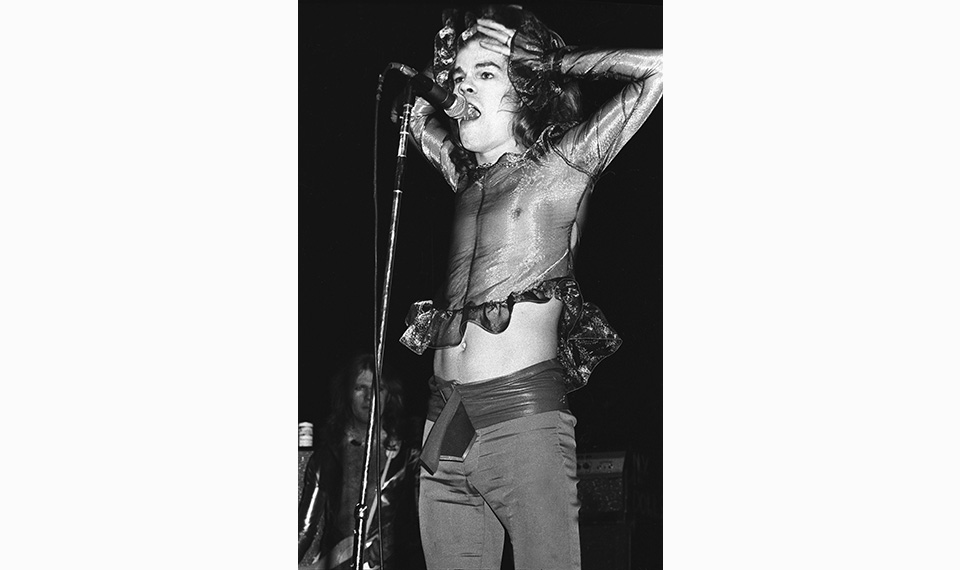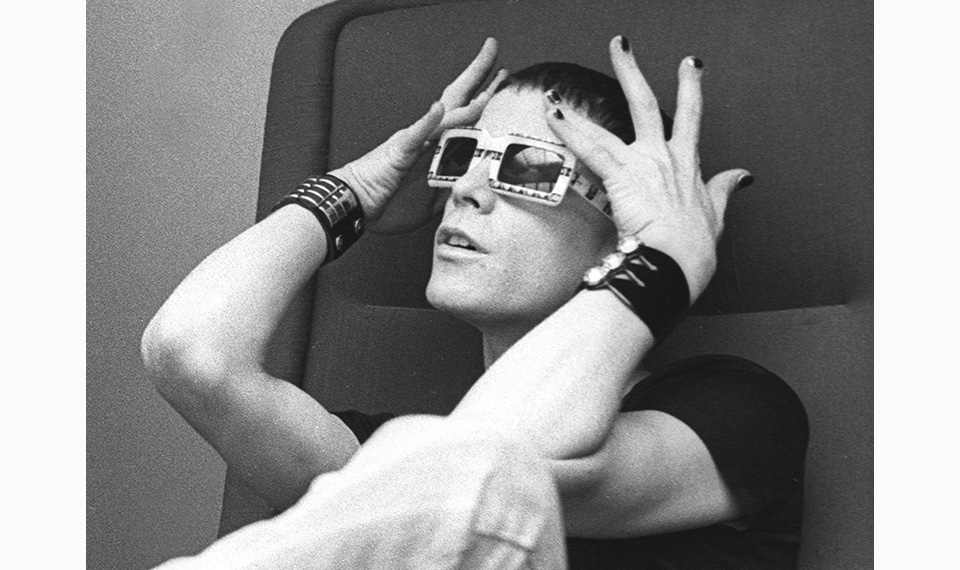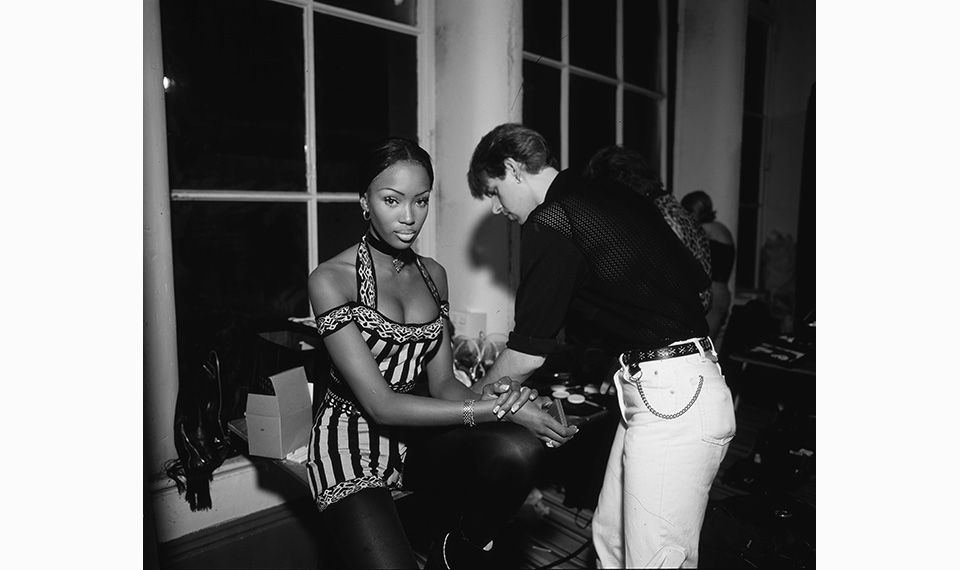Dustin Pittman Interview by Richard Boch
Richard Boch talks to photographer Dustin Pittman (aka Dustin Pop) about his show at The Roxy Hotel, his vast Pop archive and the city he loves.
Richard Boch talks to photographer Dustin Pittman (aka Dustin Pop) about his show at The Roxy Hotel, his vast Pop archive and the city he loves.
There’s Upstate New York—the one hundred or so miles north of the city that’s become the destination of choice for those looking to escape, possibly relocate, or just hang out somewhere other than Long Island’s East End. Then there’s way, way, way upstate—bigger mountains, assorted wild animals like moose and bear, some very long winters and just a short hop to the Canadian border. Dustin Pittman, the legendary photographer and Pop archivist came from up there before he decided to head south for the wilds of New York City. He was a young, good-looking, friendly kid and Dustin’s handsome face, wavy blond hair and a camera at the ready were his calling cards. His sharp eye and a good ear picked up on art, fashion and the sounds of the city as Pittman soon found himself deep in what I like to call the thick of what was it—Warhol’s Factory, the downtown club scene, Rock ’n’ Roll and eventually the swirl of beauty, glamour and pandemonium surrounding the designer Halston, the models and Studio 54. This wasn’t the Adirondack Mountains anymore and Dustin’s early days of photographing cows and barns and playing with a seemingly year-round version of winter light were now just a sweet memory.
I recently had the opportunity to speak with Pittman about his show at The Roxy Hotel, his vast Pop archive and the city he loves. His ability to keep moving forward through the social and cultural whirlwind of an ever-changing New York speaks to both his keen, observant eye and his graceful spirit.
Here’s what he had to say about it all.
Hi Dustin. These are truly amazing images that are up at The Roxy, but before we get too deep, tell me a little about your early years, when you first picked up a camera and how growing up in the Adirondacks informed your work.
My early years in the Adirondack Mountains were such a gift. Surrounded 360 degrees by nature, I learned to appreciate everything country living had to offer. It was my own Garden of Eden. A love and passion for photography and film was in my DNA as my great-grandfather and grandfather dabbled in the art of photography. I still have a photo negative of my grandfather photographing the nurse holding my Mom when she was born. I have another photo of my great-aunt Katherine. She’s in a small canoe with a professional wildlife photographer in the middle of an Adirondack lake on a moonless night working with a powdered flash. I absolutely treasure those images.
At age eight, I was enrolled in a photography class at the Boys Club and attended camp every summer. The photography class taught us an appreciation of just going out and photographing what makes you happy—no restrictions. Heidi and Flower, our two cows, were among my first models and I learned about shifting light by playing with the slats of our barn siding. The class also taught us how to develop and print our own negatives and critique one another’s work. At some point, my mom would drag me to the mall and I’d spend the whole time looking at hundreds of fashion and music magazines in the Readers Island Bookstore. Eventually, I got a job as a production assistant on the film The Sterile Cuckoo starring Liza Minnelli and it was Hollywood in the Adirondacks. By then I’d fallen in love with photography—and everything else from to fashion to music to filmmaking—so at the end of my movie job, and after meeting Liza, I moved to New York City.

David Johansen, New York Dolls, 1974. Photography by Dustin Pittman courtesy of The Roxy Hotel.
Looking at the photos, your visual telling of specific chapters of New York City history manages to stay fresh, vital and actually quite different from other photographic accounts while the scope of your work allows for a connection of all the moving parts. The photos appear almost like stepping stones moving us forward from scene to scene, from one image to another. Did you find and follow that connection into the worlds of art, music, fashion and nightlife?
Stepping stones—yes! The photos do kind of tell my story as a young artist trudging one foot in front of the other in New York City. I’m grateful those stepping stones appeared and gave me the opportunity to explore new horizons and open up new worlds! It was sort of like following the yellow brick road. I enrolled in the School of Visual Arts, majoring in Film and Photography so I could be where the action was and hit the ground running. On weekends I would go to Central Park and hang around Bethesda Fountain—the “Angel of The Waters” statue was a magical place. I’d dress in Kings Road and “Jumping Jack Flash” style fashions and walk around socializing and meeting new people. One weekend I bumped into Ingrid Superstar, one of Andy Warhol’s entourage, and said hello. Right away she asked me to come along with her because she wanted to introduce me to someone. We walked together out of the park, into the subway and down to 33 Union Square West, Andy Warhol’s Factory.

Lou Reed Alien, 1973 – 1974. Photography by Dustin Pittman courtesy of The Roxy Hotel.
Tell us about those days and the connections and friendships you made at The Factory and where that took you. That was a very edgy yet remarkable collection of people, to say the least, but you seemed to be able to mix it up with the Warhol Superstars, The Velvet Underground and even Andy. How did you do that?
At The Factory, we all hit it off immediately—Andy, of course, not saying much, but always listening. We would all go to cabarets like Reno Sweeney’s, Trudi Heller’s and Steve Paul’s Scene. We’d go to plays, clubs and galleries—and of course the back room of Max’s Kansas City. I watched Andy photograph. I watched how he got the shot or recorded private moments on tape and I took that information, burned that into my perspective as an artist and I used it. I became an early member of the Andy Warhol “Polaroid School of Photography.” I became close to Andy’s Superstars, among them Jackie Curtis, Candy Darling, Holly Woodlawn and Sylvia Miles. I met Lou Reed and every poet, painter, musician and filmmaker on the scene—all the creative misfits who saw things differently and longed for something else. Anything and everything was allowed, though maybe not all of it was legal. We were hanging out with different people all the time and for me, the magic was the mix. Luckily, I supported myself by doing as much modeling for designers as possible even though I wanted to be behind the camera and not in front.
What’s so amazing to me is when I look at some of the images at The Roxy, whether it’s a very young Naomi Campbell, a striking image of Halston or photos from your archive like those of Liz Taylor or the dance floor at Studio 54, I see people and places that are familiar but have become truly iconic. That being said, there’s a photo on view at The Roxy that’s a classic in this regard—bizarre and in an odd sense really beautiful. I’m talking about the portrait of Lou Reed that you shot during his somewhat twisted glam phase. Lou’s entire career was in a class by itself and he’s an icon whether it be Velvet’s era, Wild Side era, his late period work or his incredible live performances. When you look at this particular photo or other photos from your archive, how do they make you feel and did you realize then, where they were all headed?
My photographs of Lou Reed or even Iggy Pop and David Johansen were made out of love and respect for them. Because I knew Lou for so long it was easy meeting up and photographing him. We’ve always been close so you get to know what is acceptable. You get to know how far you can go. You get to show respect and honor. We all go back a long, long time, before 1969, and Lou and Iggy have had their ups and downs in life, like we all have. But what I appreciate is that they get up, dust themselves off and keep on keepin’ on—that is survivor mode. I have tremendous admiration and love for those actions.
So, for me, the secret to photographing people and places—images that I knew were unique—is that it comes from my heart. My passion, my connection and my love for them. Whether it was Halston, Iman or Pat Cleveland, Naomi, Liz Taylor or Liza, even Lou or Iggy, there really was no real secret—just the excitement of creating that spontaneous, combustible Pop image.
Legendary nightspots Studio 54, Mudd Club and Paradise Garage, Crisco Disco and The Anvil, CBGB’s, Mercer Arts and Max’s were cultural happenings and I photographed them all.
Even shooting pictures at events like the first Pride March in 1970, the march for Women’s Rights and to this day taking photos of marches and demonstrations for causes such a climate change, trans rights and the endless wars is what I do. It’s what I thought was important and still do.

Supermodel Naomi Campbell, 1993. Photography by Dustin Pittman courtesy of The Roxy Hotel.
Moving on and into the now, you’re always on the go and taking some amazing photos of kids, young people, scenes from the street and whatever seems to be happening downtown. The new images are really quite telling and offer a look towards a hopeful future for all of us. What’s your take on this beautiful city of ours that we forever call home?
I’m so grateful that I’m close and connected with my friends, many of them for decades, yet I’m always attracted to the new underground. Certainly, that new and now underground scene in film, painting and music does not look like the ’60s, ’70s, ’80s, ’90s or even 2000s and it shouldn’t. What I photograph today is awash with the same gritty excitement and passion as previous generations and I’m happy they trust me to be a part of their community. Embracing and honoring the kids of today, who are the same age as my kids is amazing—young people of all tribes—queer, trans and non-binary kids, dance, club and the street scenes of young artists creating and showing up for the future—their future—always evolving into a greater good. That’s why I gravitate toward them and am excited about this new young vision rediscovering and honoring their culture. It’s full of hope and change for a better life. A continuation of the celebration of independent and creative thought and of the human spirit. I love that the youth today are taking back their individual identity and trusting their beliefs.
New York City has been my home for many decades and I will always fill my cup with hope. HOPE—and these kids are our future. That’s why I have to keep moving on to new things.
Thanks so much for this Dustin. As always, it’s been a pleasure.
Dustin Pittman’s photographs are on display at The Roxy Hotel from September 5 through December 20. You can find the event details—here.
Website: poparchives.com
Instagram: @dustinpop
***
INTERVIEW Richard Boch
PHOTOGRAPHY by Dustin Pittman courtesy of The Roxy Hotel
Richard Boch writes GrandLife’s New York Stories column and is the author of The Mudd Club, a memoir recounting his time as doorman at the legendary New York nightspot, which doubled as a clubhouse for the likes of Jean-Michel Basquiat, Keith Haring, Debbie Harry and Talking Heads among others. To hear about Richard’s favorite New York spots for art, books, drinks, and more, read his Locals interview—here.